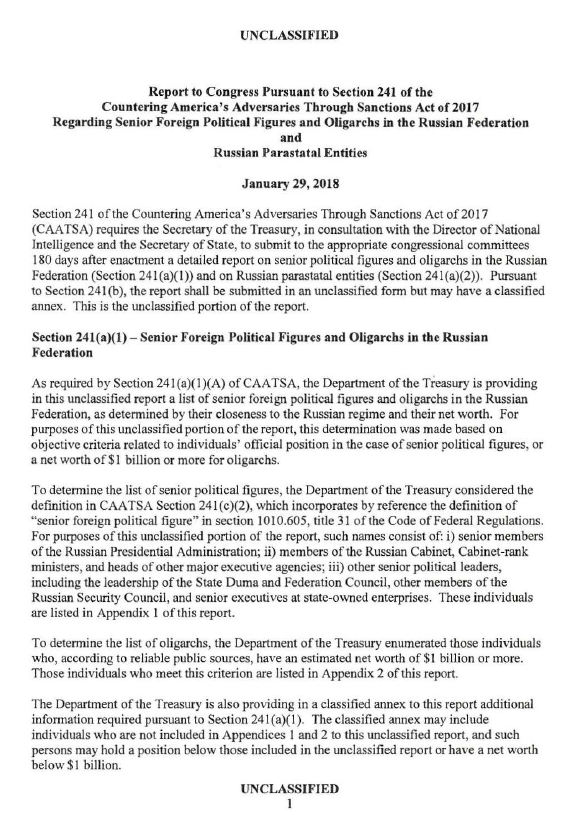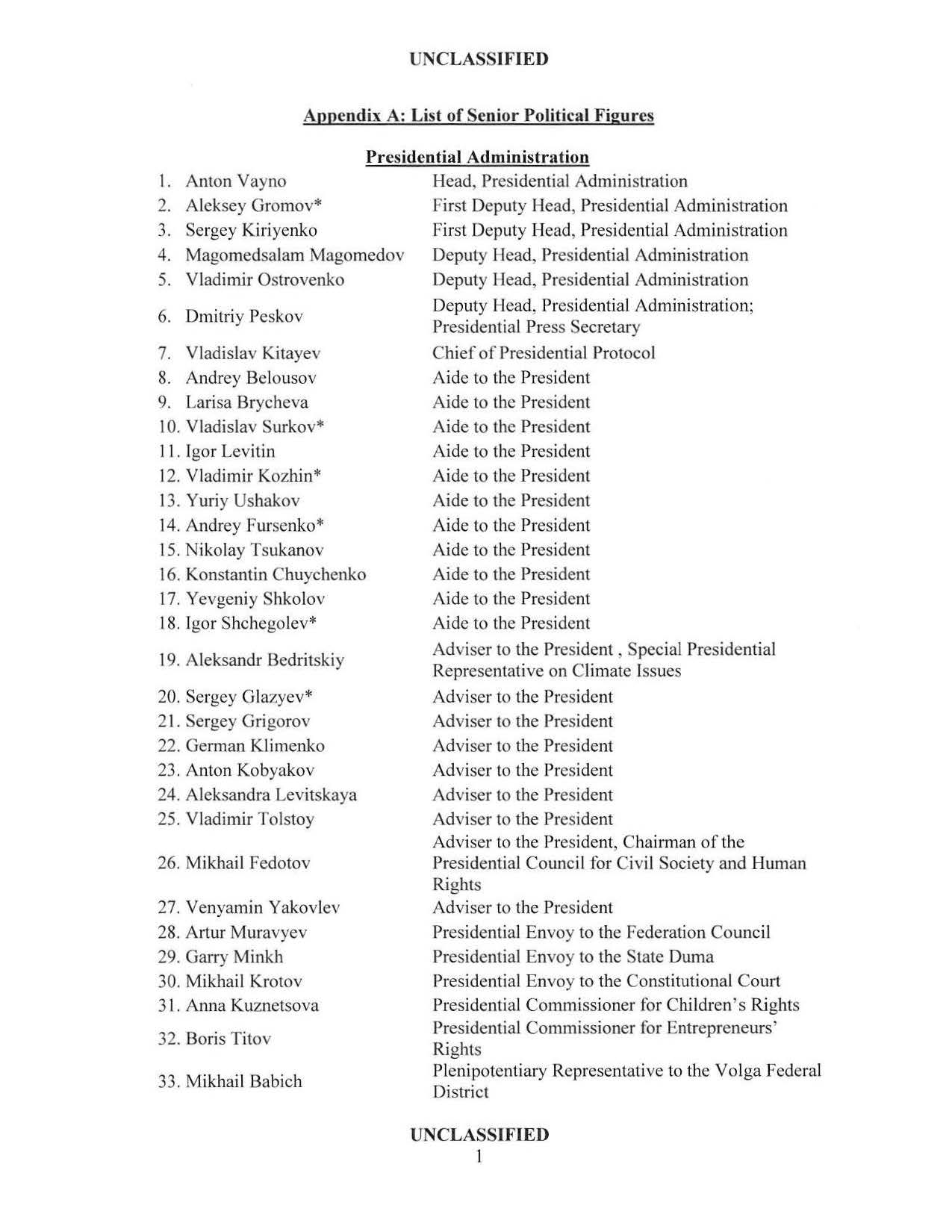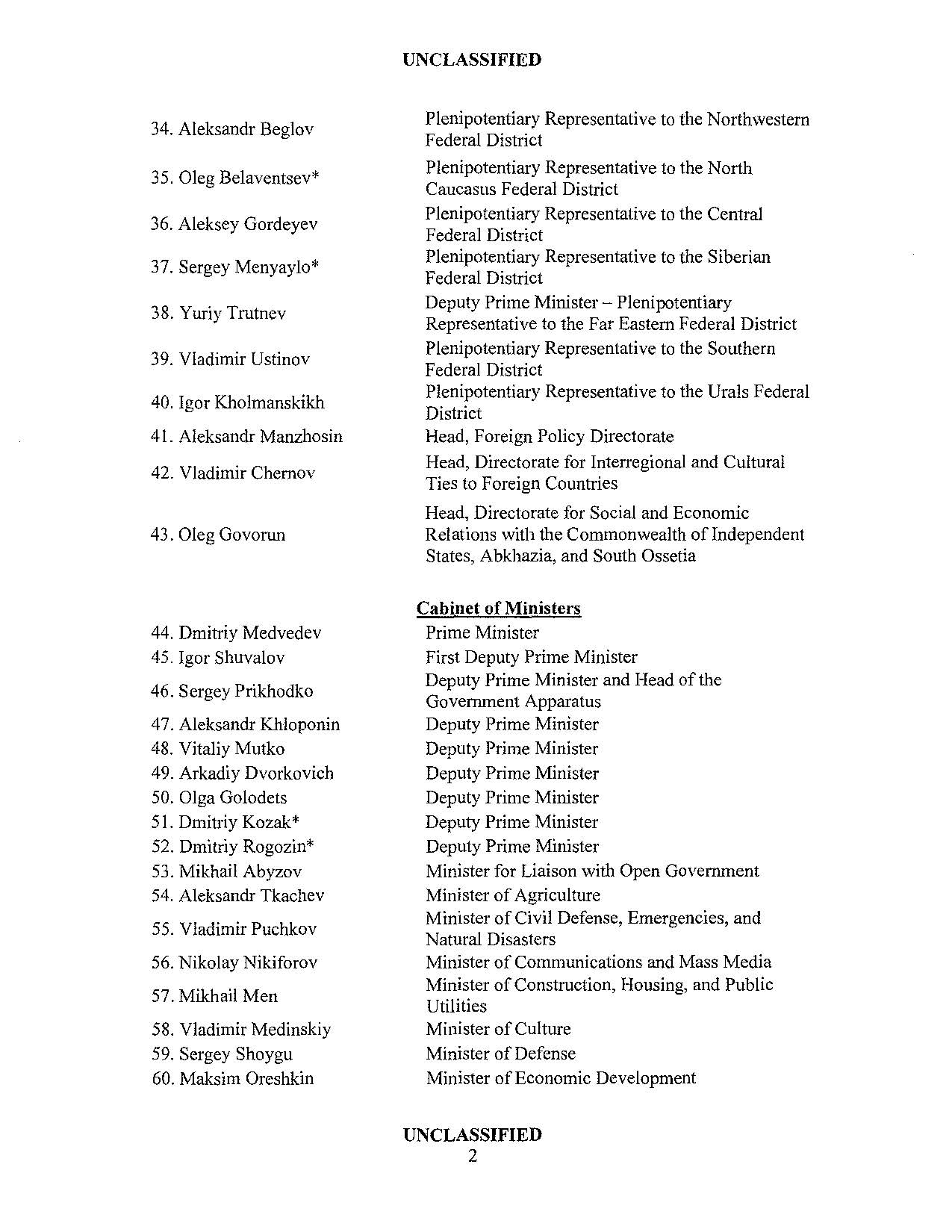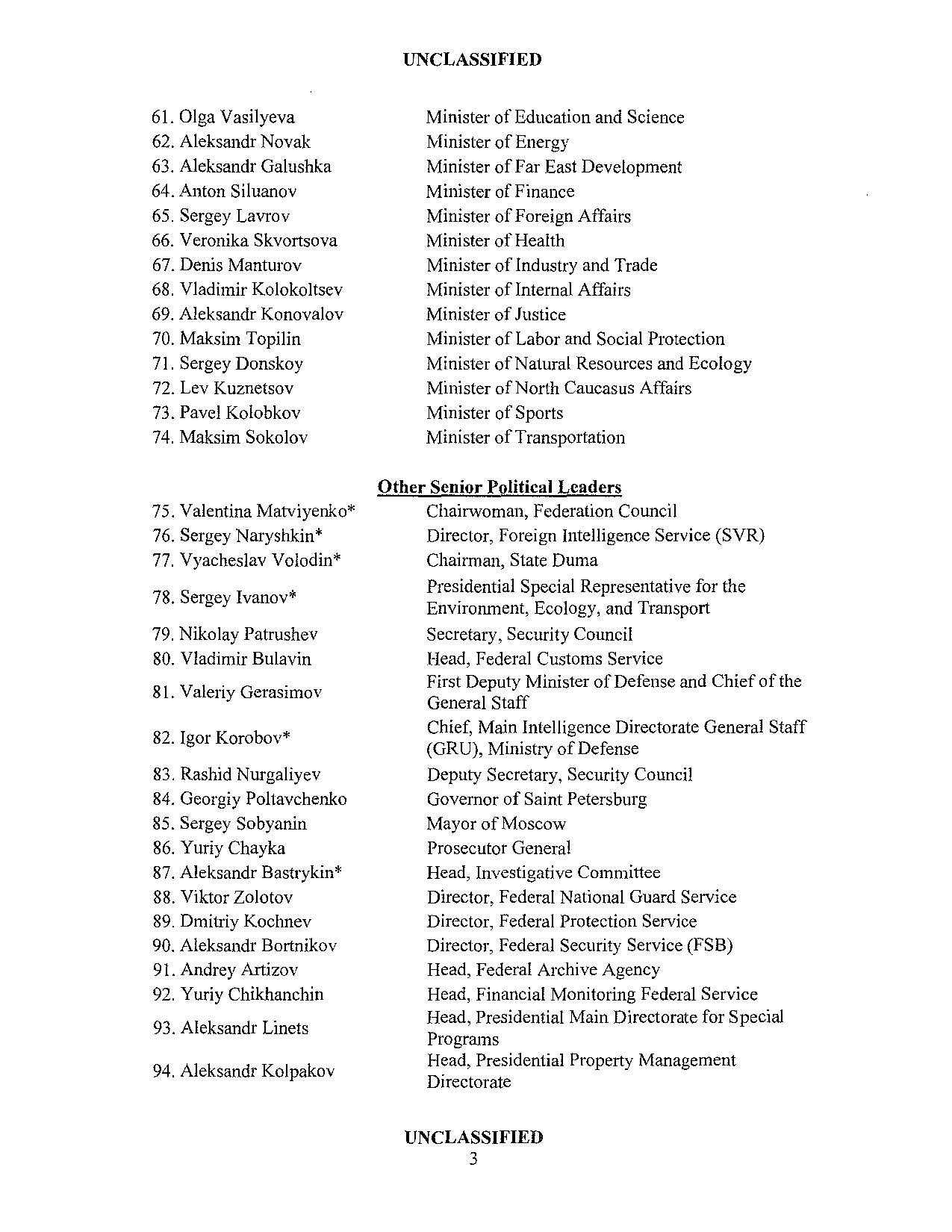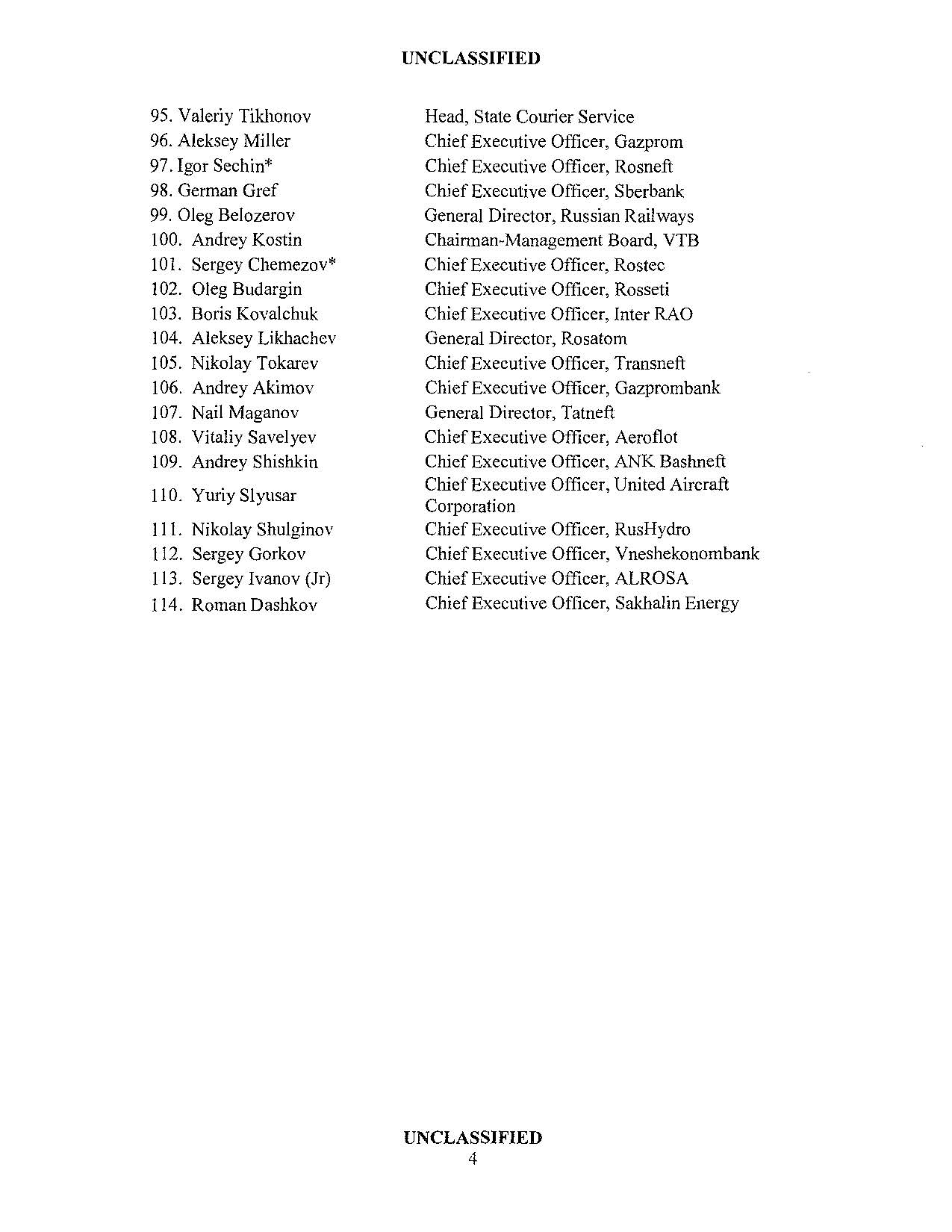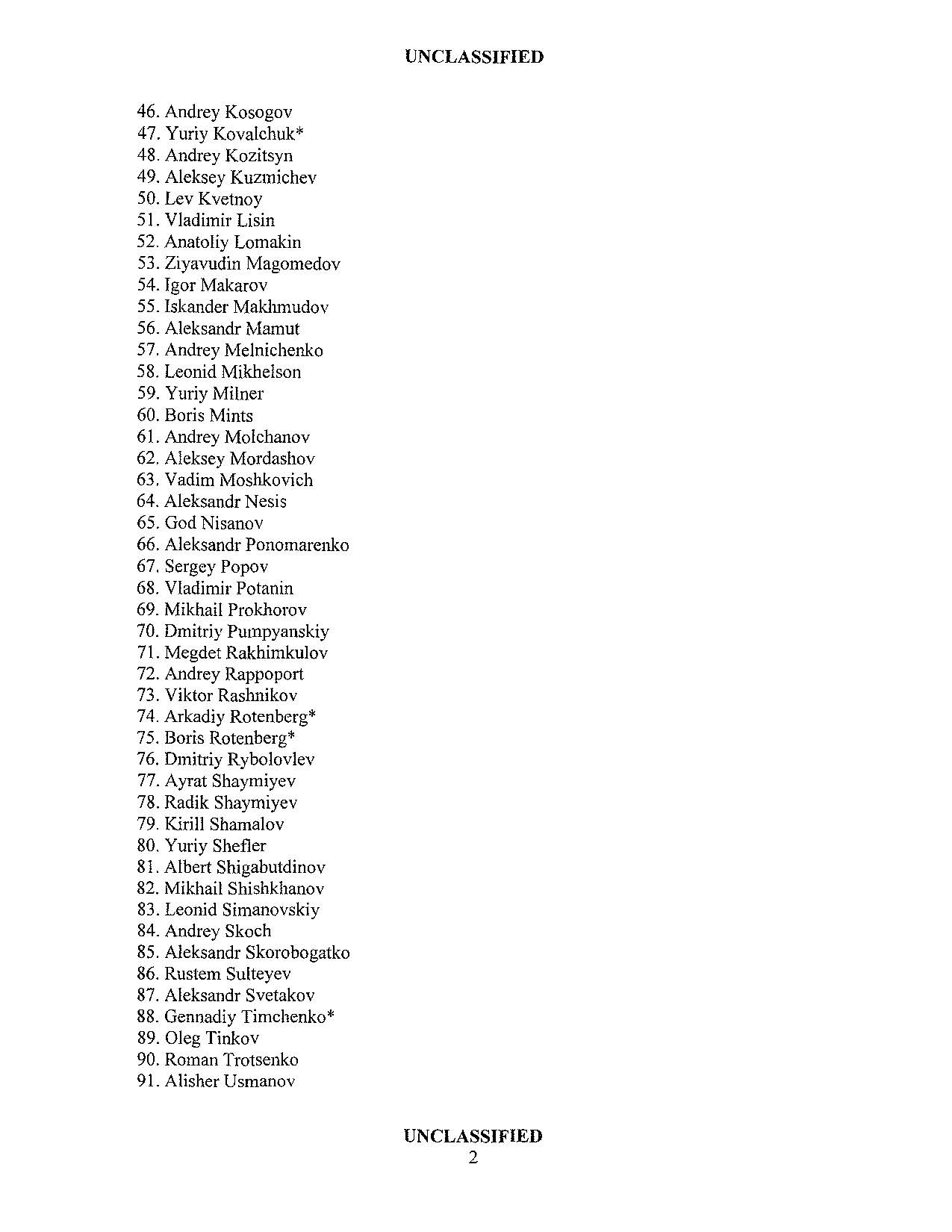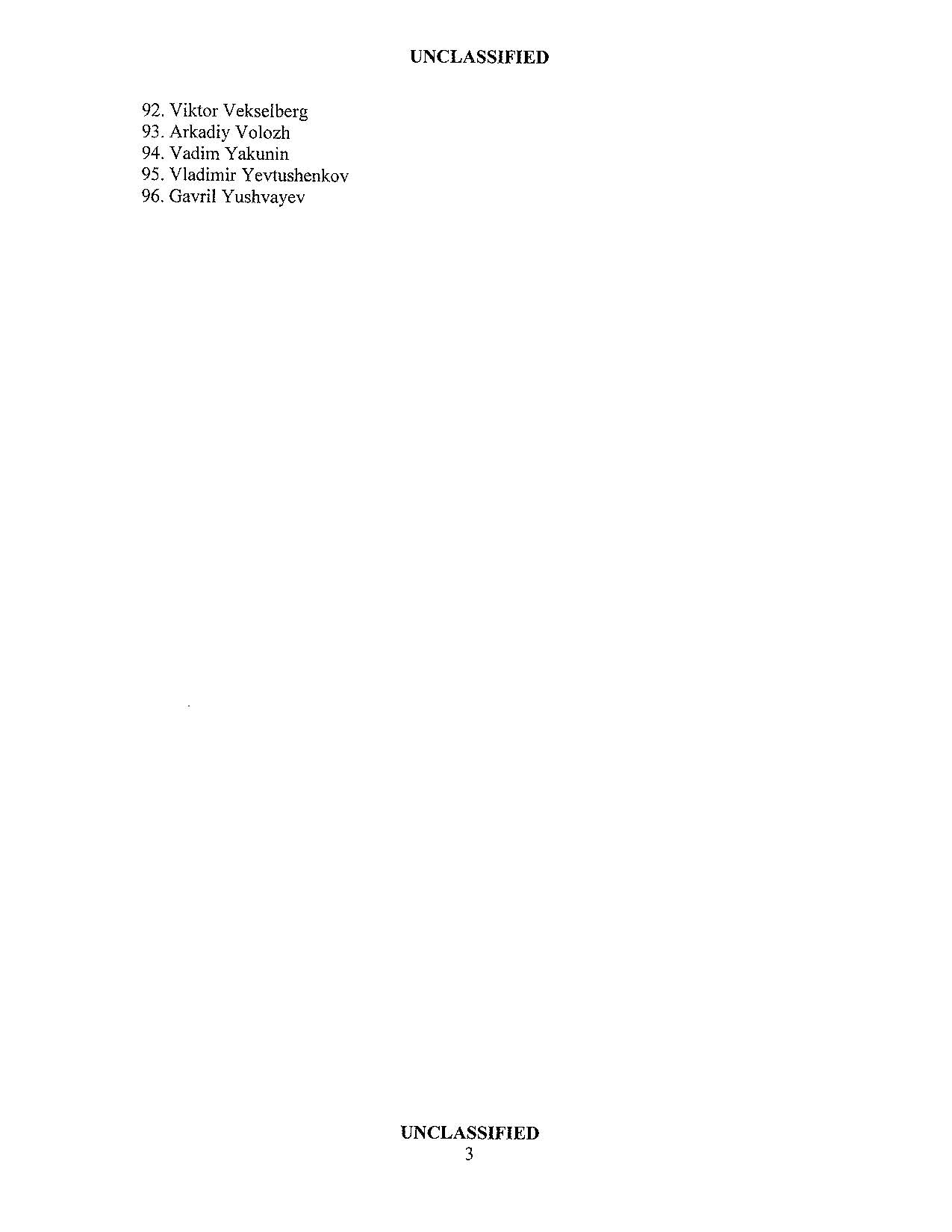Section 241 of the Countering America’ s Adversaries Through Sanctions Act of 2017 (СААTSA) requires the Secretary of the Treasury, in consultation with the Director of National Intelligence and the Secretary of State, to submit to the appropriate congressional committees 180 days after enactment а detailed report оп senior political figures and oligarchs in the Russian Federation (Section 241 (a)(l)) and on Russian parastatal entities (Section 241 (а)(2)). Pursuant to Section 241(Ь), the report shall Ье submitted in an unclassified form but may have а classified annex. This is the unclassified portion of the report.
…
As required Ьу Section 241 (a)( l)(A) of CAATSA, the Department of the Treasury is providing in this unclassified report а list of senior foreign political figures and oligarchs in the Russian Federation, as determined Ьу their closeness to the Russian regime and their net worth. For purposes of this unclassified portion of the report, this determination was made based оп objective criteria related to individuals ‘ official position in the case of senior political figures, or а net worth of $1 billion or more for oligarchs.
То determine the list of senior political figures, the Department of the Treasury considered the definition in CAATSA Section 24 1 (с)(2), which incorporates Ьу reference the definition of “senior foreign political figure” in section 1О10.605 , title 31 of the Code of Federal Regulations. For purposes of this unclassified portion of the report, such names consist of: i) senior members of the Russian Presidential Administration; ii) members of the Russian Cabinet, Cabinet-rank ministers, and heads of other major executive agencies; iii) other senior political leaders, including the leadership of the State Duma and Federation Council, other members of the Russian Security Council, and senior executives at state-owned enterprises. These individuals are listed in Appendix 1 of this report.
…
CAATSA Section 24 1(а)(2)-(5) requires а report on Russian parastatal entities, including an assessment of their role in the economy of the Russian Federation; an overview of key U.S. economic sectors’ exposure to Russian persons and entities; an analysis of the potential effects of imposing additional debt and equity restrictions on parastatal entities; and the possible impact of additional sanctions against oligarchs, senior political figures, and parastatals on the U.S. and Russian economies.
Russian parastatals have origins in the Soviet Union’s command economy. After the dissolution of the Soviet Union, the Russian government conducted large-scale privatization of these entities; in the early 2000s, it began to renationalize large companies. The Russian government has responded to economic shocks, including the financial crisis in 2008 and the imposition of sanctions in 2014, Ьу increasing its role in the economy and ownership of parastatals. As of 2016, Rнssian parastatals accounted for one-third of all jobs in Russia and 70 percent of Russia’s GDP.
…

